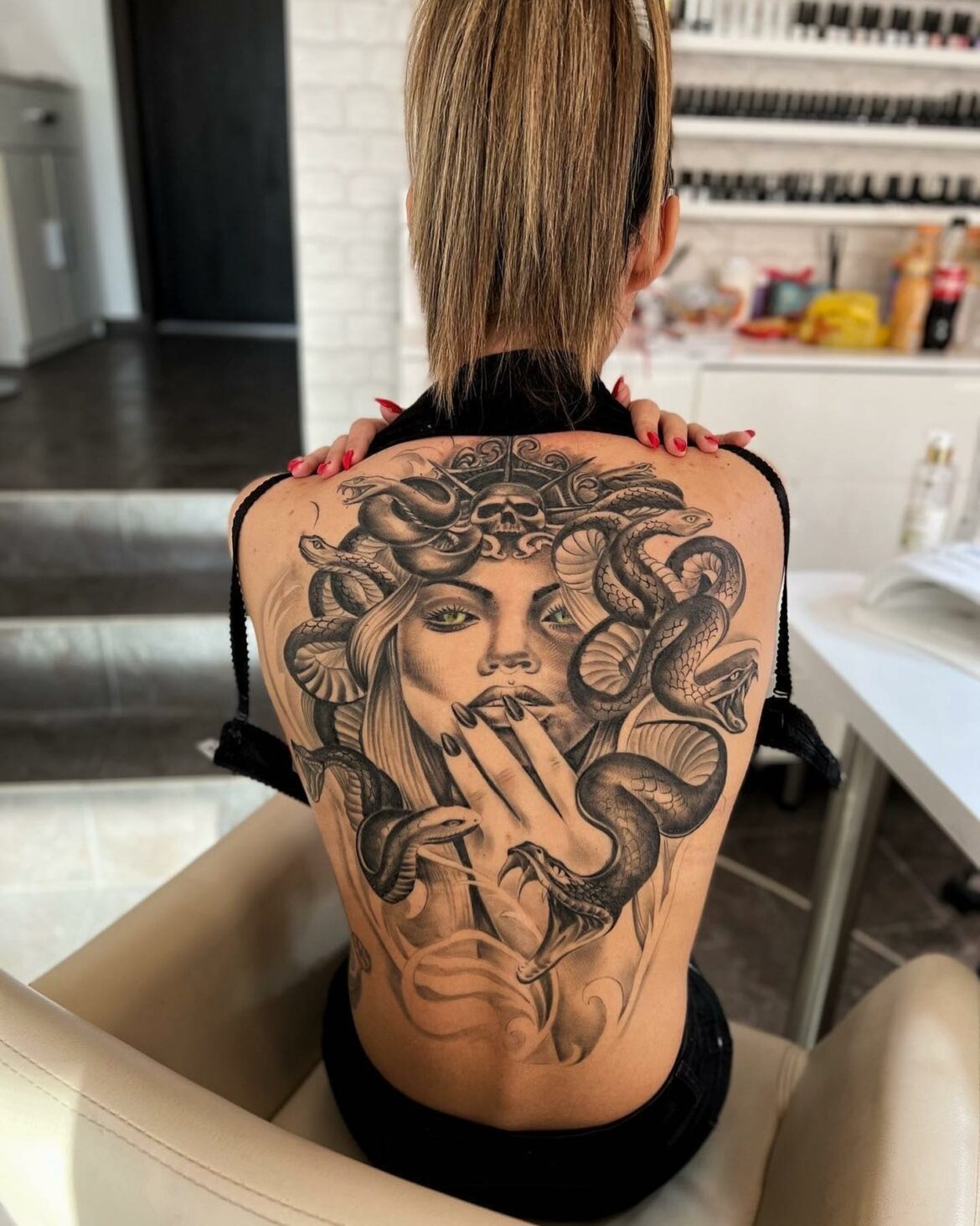Table of Contents
Tempted by the thought of immortalizing an ancient god or mythical figure on your skin? Well, my friend, you’ve wandered into just the right corner of the ink-splattered universe. We’re about to embark on a journey through the illustrious narrative of Greek-inspired body art, a realm where Apollo, Hercules, and Aphrodite live on, not just as stories etched in ancient tomes, but as dynamic pieces of art etched in flesh and ink.
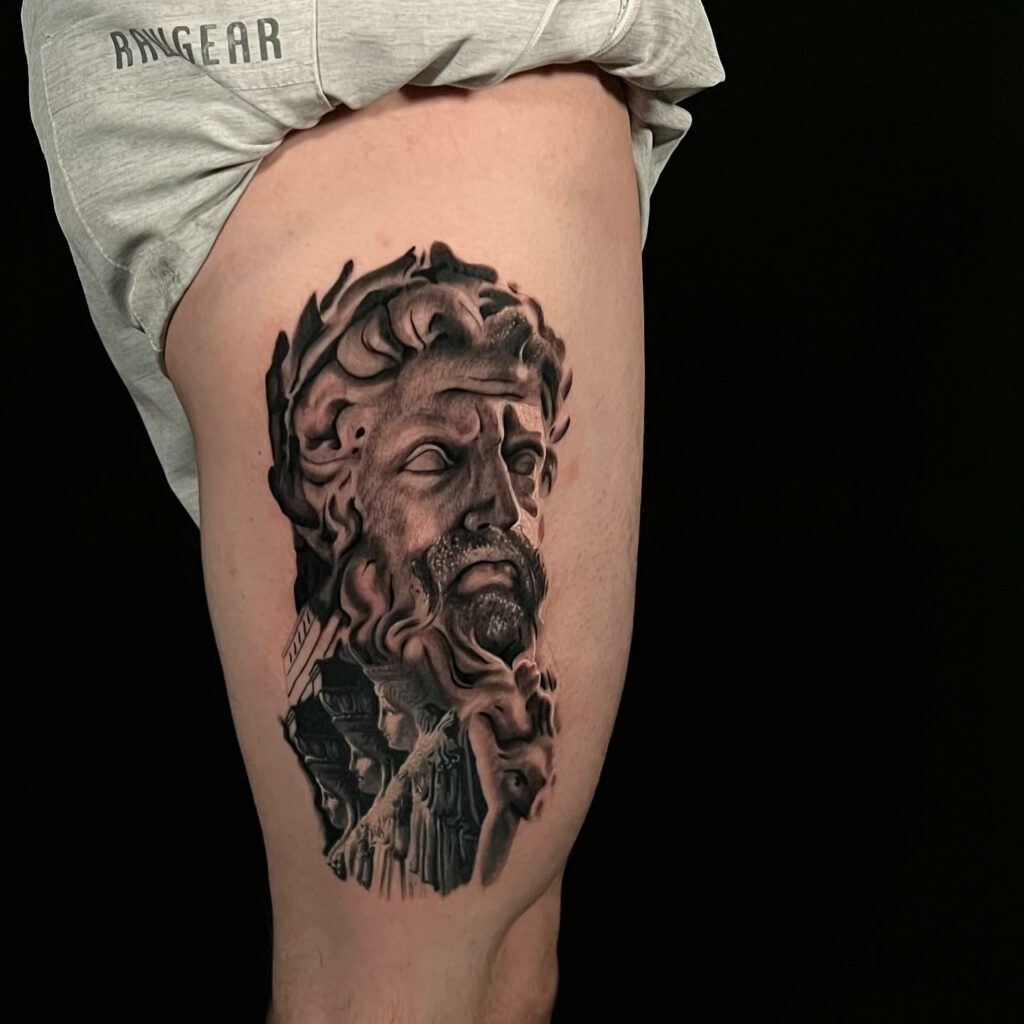
Greek mythology, with its captivating tales and larger-than-life personalities, continues to leave an indelible mark on our collective psyche, much like the very tattoos we’re discussing. Remember old Mrs. Haversham from 9th grade Literature class, with her thick glasses and passionate tales of heroic deeds and divine intrigues? That’s right – she was introducing us to a literary tradition that still pulses with life, echoed now in the buzz of a tattoo machine.
Take, for instance, Eliana, a regular client at The Pegasus Parlor. She proudly wears a detailed portrait of Athena, the goddess of wisdom. “For me, Athena represents my journey through law school, all the nights spent pouring over books, honing my skills and strategies. When I look at my tattoo, I’m reminded of my personal growth, my battles,” she shared, her eyes reflecting the same steely determination associated with her chosen deity.
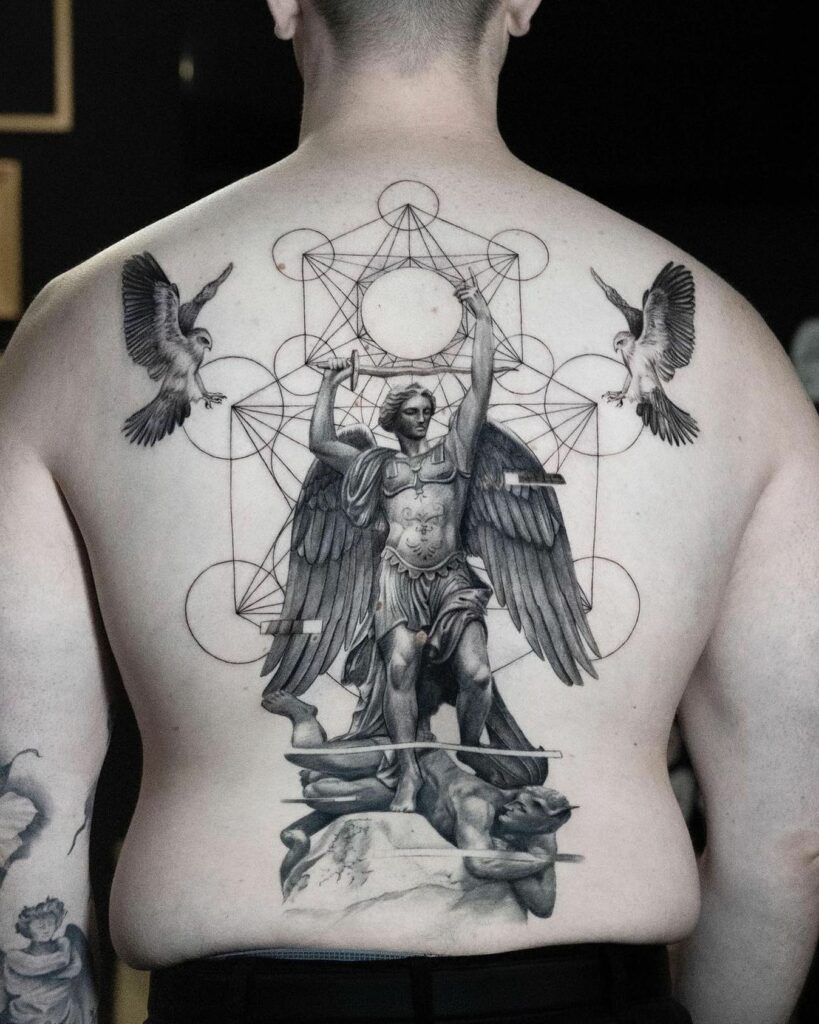
And it’s not just individuals like Eliana. There’s a vibrant canvas of people from all walks of life carrying Greek mythology in their very skin, making it a part of their personal stories. It’s this intersection of ancient lore and personal narrative that gives these tattoos their profound resonance.
Though it’s true, the historical relationship between tattoo culture and Greek society hasn’t always been rosy, the artform has evolved, becoming a compelling avenue to honor and celebrate the profound influence of Greek mythology on Western thought. Just ask Theo, a veteran artist at The Oracle Ink Studio, who’s dedicated his career to translating this rich tapestry of mythos into skin-deep masterpieces. “Every figure, every god or goddess I tattoo is a conversation with history, a nod to our shared cultural roots,” he remarks as he meticulously etches the figure of a mighty Minotaur onto a dedicated client’s arm.
So, whether you’re pondering a tribute to Hercules or Aphrodite, or you’re just intrigued by the potent symbolism and timeless charm of Greek mythology tattoos, you’re in the right place. Let’s unravel this fascinating world of ancient narratives, tattoo styles, and enduring symbolism together.
Greek Tattoo Ideas
Athena Tattoos

Take Athena, goddess of wisdom and warfare, revered by those with a steadfast heart and an intellectual spirit. People like Jack, a high school chess coach, who sports a detailed Athena tattoo as a homage to the strategic finesse that Athena embodies. She stands tall on his forearm, dressed in the attire of a warrior, a testament to her strength. You see, Athena is the daughter of Zeus, the most powerful deity of all, so it’s only fitting she inherits his strength. Wearing an Athena tattoo is an affirmation of a commitment to justice, a testament of one’s disregard for trivial pursuits and a pursuit of righteous action.
Aphrodite Tattoos

And then, you have Aphrodite. The goddess of love and beauty, she is a beloved figure for the romantics among us. Tattooed on the arm of Maria, a flamenco dancer from Madrid, Aphrodite rises from the foaming sea, her beauty amplified by her elaborate headdress and an array of jewels. Her Aphrodite is not just an embodiment of love and beauty, but also a symbolic representation of Maria’s vivacious spirit and her unabashed expression of her sensuality.
Zeus Tattoos
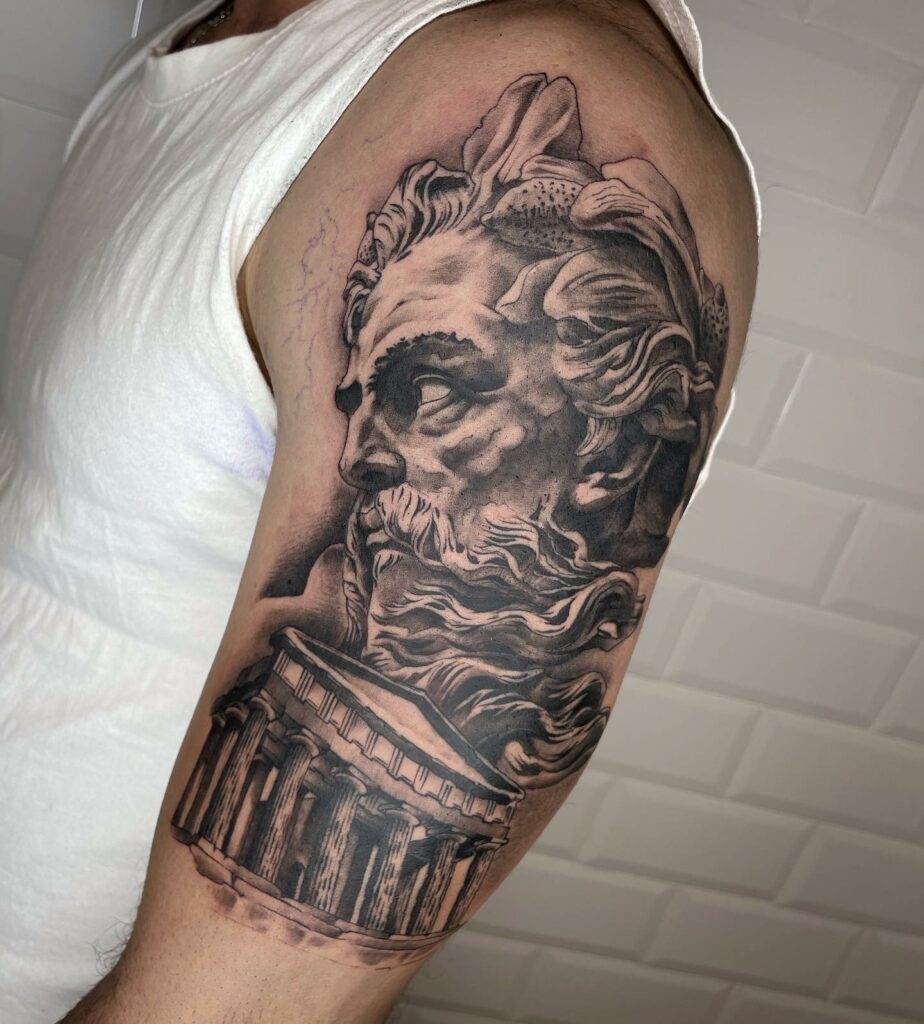
Moving on to Zeus, the grand patriarch of gods. No stranger to the tattoo world, Zeus resonates power and authority. Like that of Tony, an ex-marine, his Zeus tattoo symbolizes his own personal journey from a soldier to a veteran leader. Zeus, depicted in the midst of a thunderstorm, embodies incredible strength and power, a fitting emblem for Tony’s life journey.
Apollo Tattoos
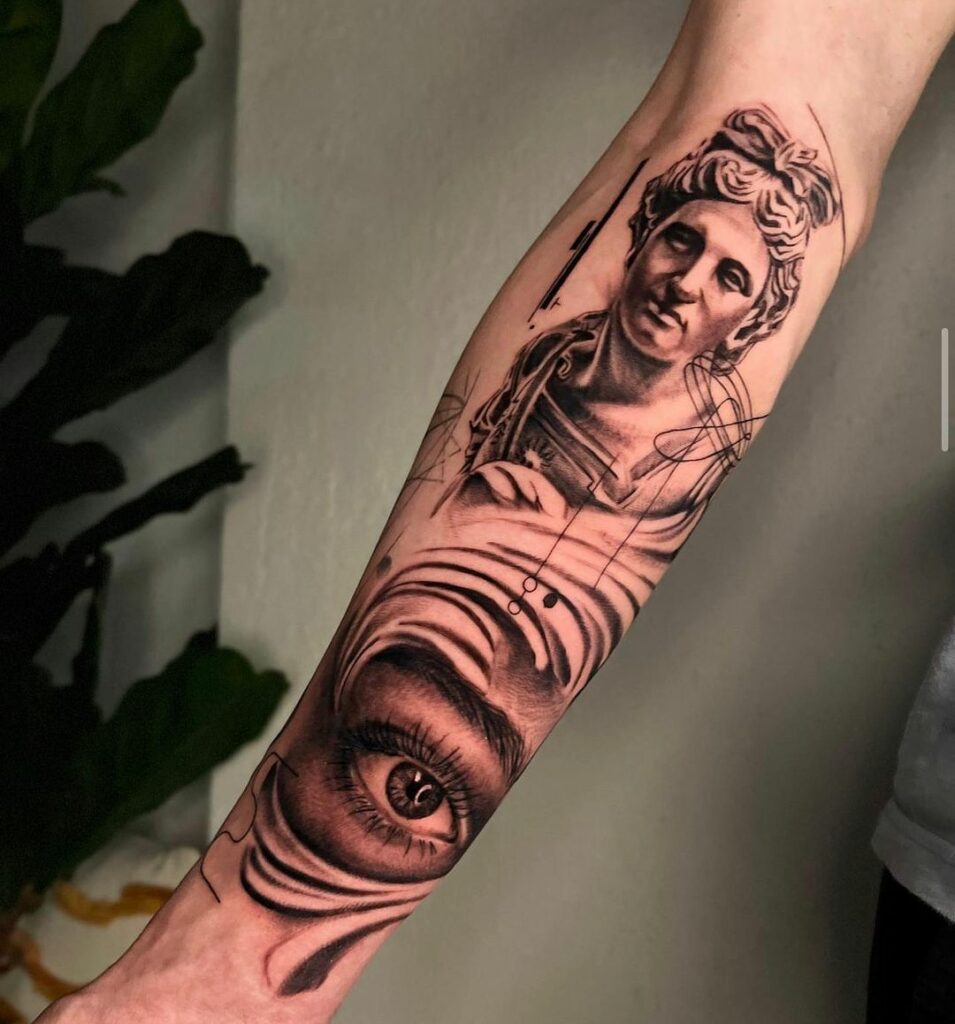
Apollo, son of Zeus and deity of arts, is another beloved figure in the tattoo world. Tattooed on Emma, a violinist, Apollo’s curly short hair and athletic build reflect the handsome deity of music and prophecy. To Emma, her Apollo tattoo is a reminder of her musical journey and the healing power of her work.
Poseidon Tattoos
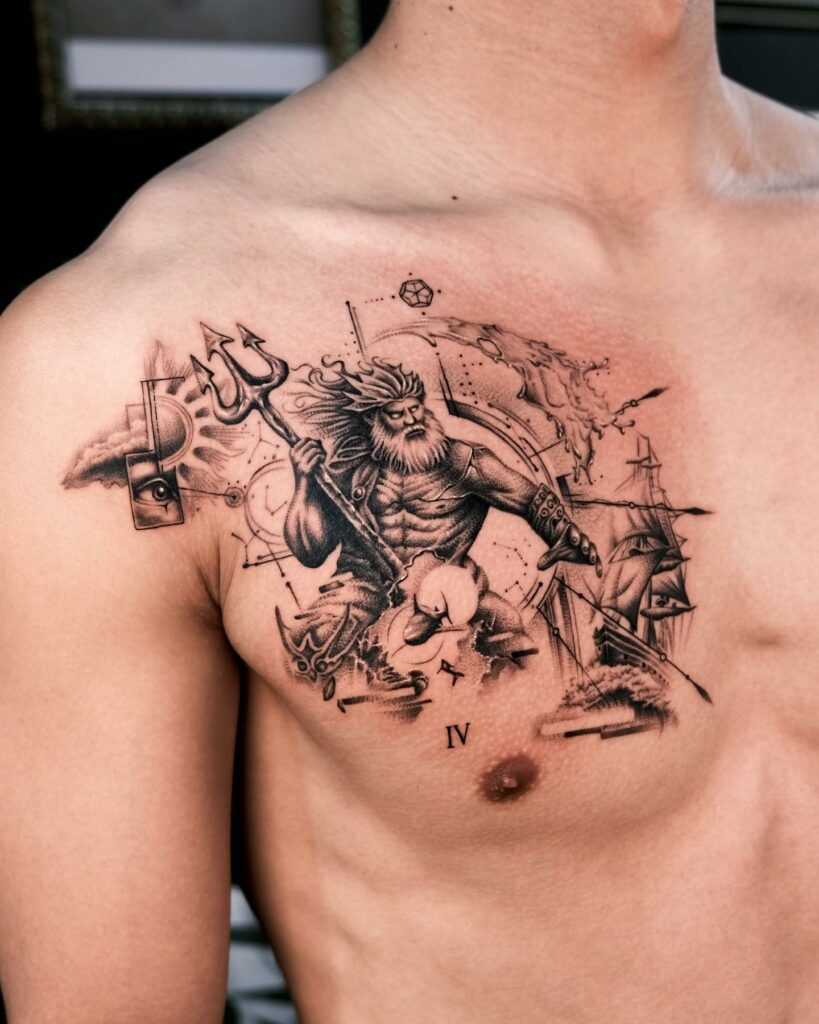
The mighty Poseidon, lord of the sea, is another popular choice for those with a love for the water. Sailors, like old Captain Ross, often wear Poseidon tattoos as a testament to their voyages and as a token of gratitude to the deity for safe journeys. Poseidon’s portrayal, surrounded by massive waves, is a testament to his control over the seas and a symbolic representation of learning to flow with one’s emotions.
Selene Tattoos

Selene, the enigmatic goddess of the moon, resonates with the mystery and allure of the night. Selene tattoos, like that on Nora, a poet, symbolize the duality of passion and non-commitment, a reflection of Nora’s own love for writing and her transient relationship with her craft.
Hephaestus Tattoos

Hard work and innovation find a personification in Hephaestus, the god of technology and craftsmanship. His portrait-style tattoos are popular among craftspeople and innovators, like Ben, a young robotics engineer, who sees Hephaestus as a divine inspiration for his work.
Medusa Tattoos

Greek mythology is not complete without its pantheon of fascinating creatures and heroes. The terrifying Medusa, the half-man half-horse Centaurs, the heroic Achilles, each carries a unique symbolism. From warding off evil with a Medusa tattoo to expressing strength and protection with an Achilles piece, these tattoos tell a fascinating story.
Greek Statue Tattoo Meaning
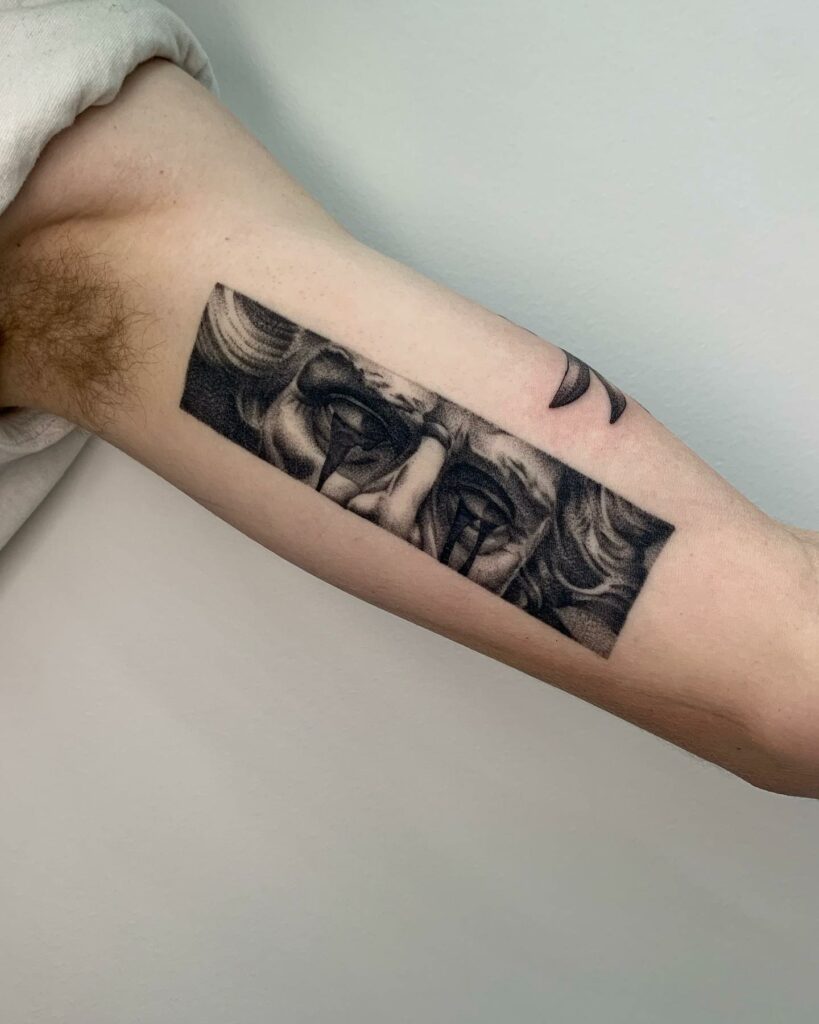
Greek statue tattoos encapsulate the essence of the Greek mythological figures. Each line, each profile speaks of the figure’s story and importance.
Phoenix Tattoos
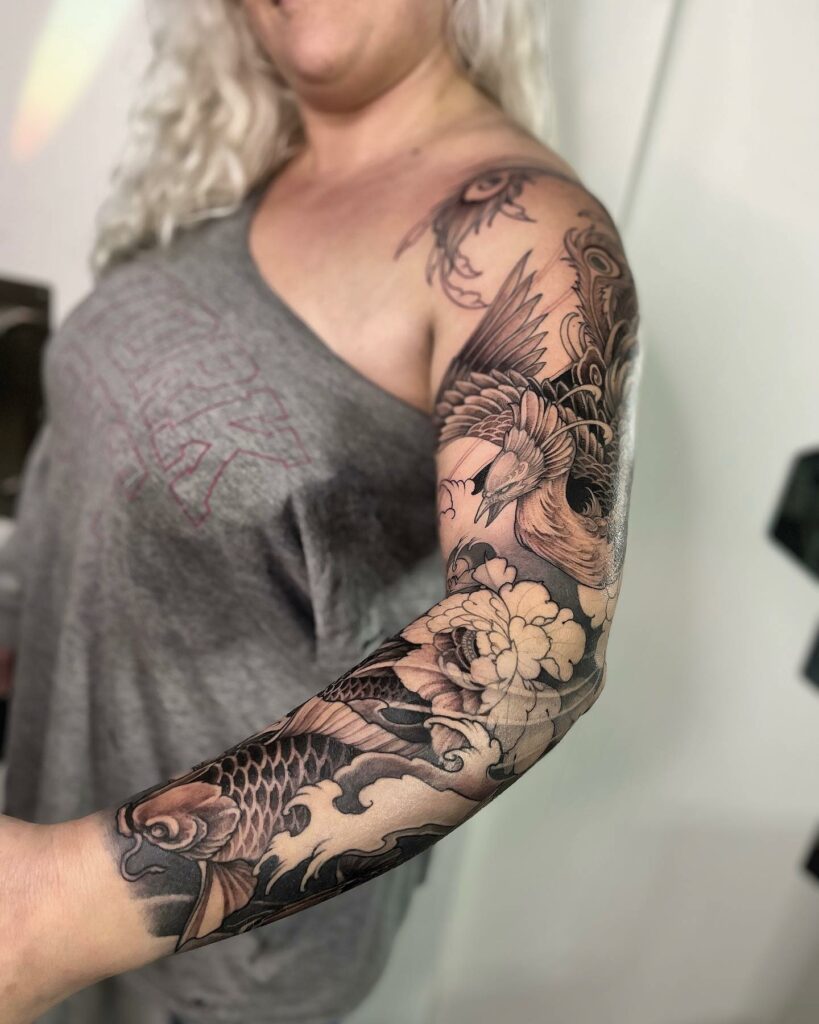
Meanwhile, the magnificent phoenix symbolizes rebirth and invincibility, a beacon of hope, and a testament to survival. Each Greek-inspired tattoo is a rich tapestry of stories, symbolism, and personal meanings, creating a mesmerizing world that is as fascinating as the mythology it is rooted in. So, if you’ve been captivated by these tales, perhaps it’s time to dive into the captivating world of Greek-inspired tattoos!
Styles In Greek Mythological Tattoos
Greek mythology tattoos are deeply symbolic and offer a broad spectrum of styles that allow artists to showcase their skills. Here are some of the common styles:
- Realism: Realistic tattoos try to emulate the physical world in as much detail as possible. This style is often used in Greek mythology tattoos, particularly when portraying gods, goddesses, and mythological creatures with human-like features, such as Apollo or Medusa.
- Black and Grey: This monochromatic style can be incredibly effective for Greek mythology tattoos, providing a timeless, classic look. It allows for high contrast and intricate details which are perfect for depicting scenes from Greek myths or portraits of deities.
- Neo-traditional: This style combines elements of old-school tattooing with modern aesthetics and techniques. Neo-traditional Greek mythology tattoos may incorporate vibrant colors, bold lines, and unique design elements while maintaining the mythological theme.
- Illustrative: This style mimics the look of classic illustrations in books or comics. Illustrative Greek mythology tattoos often have a hand-drawn quality and can range from highly detailed and realistic to more simplified or cartoon-like designs.
- Portraiture: This style is often used for tattoos of Greek gods and goddesses. A portraiture tattoo is a detailed representation of a face or figure, and in Greek mythology tattoos, this style can bring the deities to life.
Historical Relationship Between tattoo culture & Greek Society
Diving into the historical relationship between tattoos and Greek society is an intriguing journey. While today we view tattoos as a form of personal expression and art, ancient Greek society had a different perspective.
The ancient Greeks themselves were not known for practicing tattooing widely. The word ‘tattoo’ even stems from the Tahitian ‘tatau’, and it wasn’t introduced into the English language until the 18th century by Captain James Cook upon his return from his voyages in the Pacific. In classical Greek, the practice of tattooing was often referred to as ‘stigmata’, and its uses were quite different from today’s personal and aesthetic reasons.
In ancient Greece, tattoos were more often associated with punishment and stigma. It was used as a means of marking slaves, criminals, or those who had committed crimes against the gods. In effect, these stigmata became a visible sign of their dishonor and disgrace.
There was also a practice called ‘anthroponomia’, which involved branding a slave’s forehead with the name of his or her master. If the slave were to run away, they could easily be returned when found. Similarly, criminals might bear the mark of their crime for all to see.
However, it’s important to note that the ancient Greeks were also aware of tattooing as a cultural practice outside of their society. They observed the tattooing customs of the Thracians, Scythians, and Persians, among others, who used tattoos in ritualistic and tribal contexts, as well as for beauty and adornment.
Fast forward to modern times, and the perception of tattoos in Greek society has shifted significantly, much like it has in many other parts of the world. Tattoos are no longer associated with punishment or slavery, but are seen as a medium of self-expression, with many people choosing designs that reflect their personal beliefs, values, or interests.
Today, Greek mythology is a popular theme in the tattoo world globally. From the god Zeus to mythical creatures like the Phoenix, these designs are chosen for their symbolic meanings, aesthetic appeal, and as a tribute to the rich, timeless narratives of Greek mythology.
Despite the fact that the ancient Greeks themselves didn’t widely practice tattooing for personal or aesthetic purposes, their rich mythology and culture have had a significant impact on modern tattoo culture, demonstrating the shifting perspectives and practices surrounding this intriguing form of body art.
Conclusion
In the dynamic tapestry of the tattoo world, Greek-inspired tattoos offer an evocative channel for self-expression and storytelling. Placement is highly individual – intimate messages may tuck away on the inside of a wrist or behind an ear, while grand tributes to Zeus or Athena might command the breadth of a back or a shoulder. Do remember, larger, more intricate designs will naturally come with a higher price tag. Depending on your chosen artist and the complexity of the design, a Greek-inspired piece could cost anywhere between a few hundred to a couple of thousand dollars. As with any tattoo, risks include allergic reactions to the ink, skin infections, or complications linked to unhygienic practices. It’s crucial to thoroughly research your chosen tattoo artist, making sure they maintain rigorous hygiene standards, and be vigilant in following aftercare instructions to mitigate these risks. Greek mythology has enthralled generations, and its rich, timeless symbolism offers a beautiful palette to adorn our skin. Whether you find resonance in the strength of Athena, the wisdom of Apollo, or the resilience of the Phoenix, a Greek-inspired tattoo can be a vibrant, meaningful testament to your unique life story.
Please keep in mind that the actual cost of a tattoo can vary greatly depending on the artist’s expertise, the complexity of the design, geographical location, and other factors. Therefore, these numbers are just approximations.
| Greek Tattoo Type | Approximate Size | Estimated Cost |
|---|---|---|
| Athena Tattoo | Medium (6×6 inches) | $300 – $400 |
| Aphrodite Tattoo | Large (8×10 inches) | $600 – $800 |
| Zeus Tattoo | Large (8×10 inches) | $600 – $800 |
| Apollo Tattoo | Medium (6×6 inches) | $300 – $400 |
| Poseidon Tattoo | Full Sleeve | $1000 – $1500 |
| Selene Tattoo | Small (3×3 inches) | $150 – $200 |
| Hephaestus Tattoo | Medium (6×6 inches) | $300 – $400 |
| Medusa Tattoo | Large (8×10 inches) | $600 – $800 |
| Centaur Tattoo | Full Back Piece | $1500 – $2500 |
| Achilles Tattoo | Medium (6×6 inches) | $300 – $400 |
| Greek Statue Tattoo | Full Back Piece | $1500 – $2500 |
| Phoenix Tattoo | Large (8×10 inches) | $600 – $800 |
Remember, it’s not just about the cost. A good tattoo is an investment, and it’s important to choose a professional artist who can deliver the quality of work you want. The experience and skill of the tattoo artist play a significant role in the final outcome.
